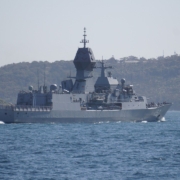The Enlargement of ASEAN
Topic of Study [For H2 History Students]:
Paper 2: Regional Conflicts and Co-operation
Source Based Case Study
Theme III Chapter 2: Growth and development of ASEAN
ASEAN: The Founding Five
Ever since the Bangkok Declaration was signed in 1967, ASEAN was formed by five founding member nations to promote regional cooperation. The five members are: Thailand, Philippines, Malaysia, Indonesia and Singapore.
In the 1980s and 1990s, five new members joined ASEAN, namely Brunei Darussalam (8 January 1984), Vietnam (28 July 1995), Laos and Myanmar (23 July 1997) and Cambodia (30 April 1999).
Let’s look at some of the key considerations for ASEAN’s new members, namely Vietnam and Myanmar.
1. Vietnam
Before Vietnam joined ASEAN, member nations of ASEAN did not establish strong diplomatic ties with said country. This was largely the result of Vietnam’s invasion of Cambodia in 1978. Its illegal occupation was perceived by many not only as a threat to sovereign rights, but also security risks.
Furthermore, ideological differences between ASEAN members (which mostly advocated democracy) and Vietnam further made it difficult for political leaders to see eye to eye.
Nevertheless, member nations, including Thailand (which was initially concerned with Vietnam’s military aggression in Cambodia) were supportive of admitting Vietnam due to the significant benefits to facilitate regional economic integration.
Fear of Vietnam defined ASEAN for much of its institutional history; now ASEAN’s main antagonist has joined the fold. The decision to allow Vietnam membership, and to fast-track the applications of other Southeast Asian states, was pushed by Thailand, which saw itself as the economic hub of mainland Southeast Asia and perceived ASEAN’s expansion as an opportunity to increase its own status within ASEAN.
An excerpt from “Explaining ASEAN: Regionalism in Southeast Asia” by Shaun Narine.
From the Vietnam’s perspective, the consideration of becoming part of the ASEAN family was a desirable prospect. The gradual decline of the Cold War rivalry ushered a new era of political cooperation in Southeast Asia. In 1986, the Vietnamese government conducted a policy reform, known as Doi Moi, to advance economic development. As such, Vietnam adopted a more outward-looking attitude and sought cooperation with ASEAN members.
The end of the conflict in Vietnam, and of the Cold War, removed some of the barriers to co-operation. The essential factor for Vietnam’s membership into ASEAN, however, stemmed from the policy of reform or renovation (doi moi) that the Vietnamese Communist Party announced in 1986. It was this policy that led Vietnam to approach ASEAN with increasing interest from the mid-1980s.
Excerpt from “The 2nd ASEAN Reader” edited by Sharon Siddique and Sree Kumar.
2. Myanmar
As for Myanmar, the political controversies surrounding the alleged human rights violations explained the reluctance of some member states of ASEAN in accepting Myanmar’s admission. Furthermore, Western countries, including the USA, also expressed similar sentiments towards ASEAN’s decision to admit Myanmar.
In the late 1960s, ASEAN members had invited Myanmar to join the organisation. However, Myanmar was one of the founding members of the Non-Aligned Movement and rejected the offer. In the early 1990s, the military government changed its stance as the leaders believed that a policy of isolationism was not desirable for its progress.
Notably, ASEAN’s past successes and effective political mechanisms (including the ASEAN Way) were motivating factors that spurred these countries to join the organisation as well.
According to Khin Ohn Thant (2001), there were at least two reasons which led to Burma’s decision to join ASEAN. First, towards at the end of the millennium, internal and external conditions had changed in the country. Domestically, Myanmar had expended large resources on internal security measures for decades, and now “the government had signed peace treaties with most of the revels, who have laid down their arms. This now allows the Myanmar Government to devote more attention to external matters, including ASEAN“.
The second reason, suggested by Khin, was that, “in this age of globalization and regionalism, the country realizes that it cannot continue to isolate itself. It needs to identify with a sympathetic group, which will treat it as one of them, and a group that will not exploit Myanmar’s weak situation.”
Most probably, the “ASEAN Way”, that is, non-interference in each other’s internal affairs, and its consensus-building and conflict resolution mechanisms, attracted Myanmar into the embrace of ASEAN.
Excerpt from “Myanmar in ASEAN: Regional Cooperation Experience” by Mya Than.
What can we learn from this article?
Consider the following question:
– Assess the view that ASEAN’s enlargement was successful in promoting regional unity.
Join our JC History Tuition and learn more about ASEAN. The H2 and H1 History Tuition feature online discussion and writing practices to enhance your knowledge application skills. Get useful study notes and clarify your doubts on the subject with the tutor. You can also follow our Telegram Channel to get useful updates.
We have other JC tuition classes, such as JC Math Tuition and JC Chemistry Tuition. For Secondary Tuition, we provide Secondary English Tuition, Secondary Math tuition, Secondary Chemistry Tuition, Social Studies Tuition, Geography, History Tuition and Secondary Economics Tuition. For Primary Tuition, we have Primary English, Math and Science Tuition. Call 9658 5789 to find out more.











